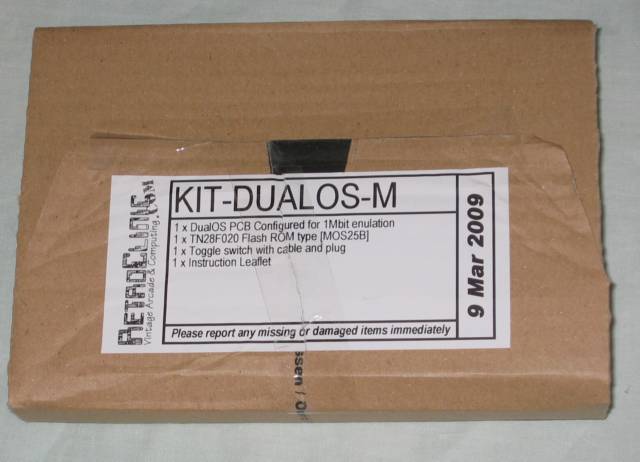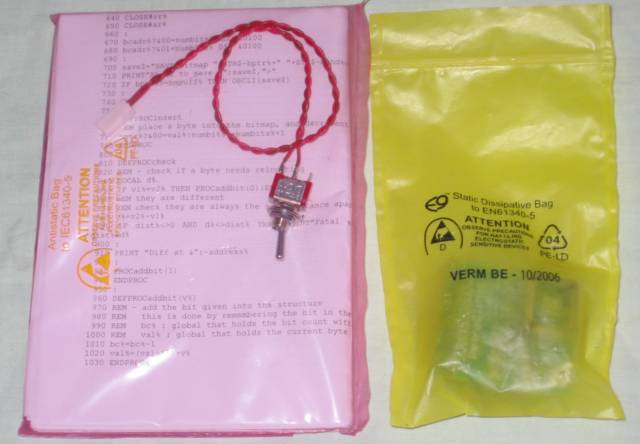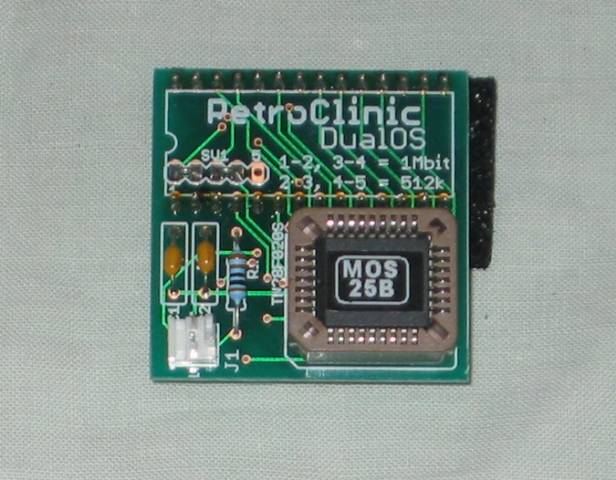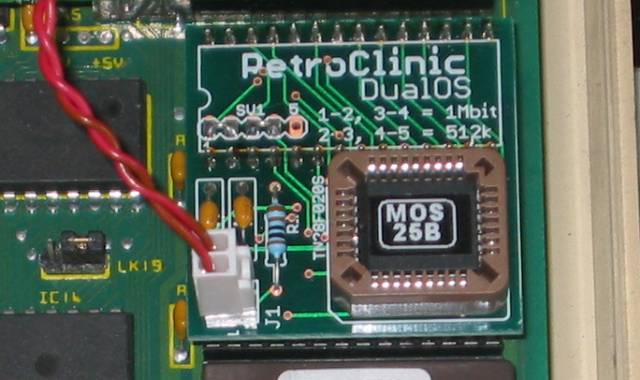
[Back ]
The RetroClinic DualOS board is a replacement for the Acorn ROM and the other ROM images contained in it (Terminal, View, ADFS, BASIC, Edit, Viewsheet and DFS). It allows the user to sellect MOS 3.20 (for compatability) or MOS 3.50 at startup using a switch. In particular the ADFS ROM has been changed replacing the Acorn SCSI code with support for IDE devices across the 1MHz bus (also changed in the MOS3.20 ROM). This enable the Master to use modern IDE drives and Compact Flash cards.
Further details, including how to buy, are available from RetroClinic.com. The DualOS may no longer be available as it has been removed from the RetroClinic website.

RetroClinic DualOS box

RetroClinic DualOS box contents

RetroClinic DualOS circuit board

RetroClinic DualOS Instructions

RetroClinic DualOS fitted in a Master
The DualOS Master Board from RetroClinic replaces your original 1Mbit ROM on the BBC Master 128. It contains 2 versions of the Master MOS, the original 3.20 that your machine already contains, and the later MOS 3.50, with all the later versions of the utilities. It uses a single chip to contain all the data, and is made on a professionally produced PCB.
Why would you want a switchable MOS, when you might as well just buy one of the other 3.50 only upgrades available and be done with it? The simple answer is compatibility. As was the case with the B+, and the Master when it first came out, because of changes to the OS code, software that accesses the operating system directly did not like the changes, and either ran badly, or crashed completely. This is still the case with the MOS 3.50. If you use only the later version, some of the games and utilities you used to enjoy and use will not work any more. Having both in your machine, available at the flick of a switch, gives you the absolute best of both worlds.
Both versions of the MOS have been correctly patched for the Y2K bug, unlike some other MOS 3.50 only upgrades you can buy, so the year displays correctly from 1980 to 2079 - essential if some software was not written to be Y2K compliant, and you need to back the year off to make it run. Also, the DFS in MOS 3.50 has been patched to correct several bugs, and allow double density formatting under the DFS with the correct system calls. Add to that, the ADFSs on both versions of the operating system have been patched to use IDE and Compact Flash Hard Drives, and work 100% with my Internal and Dual External CF Hard Drive systems.
Most Masters have their MOS chip in a socket, and this is simply removed, and the new PCB plugged into place. It does not obstuct any other ROM socket, or the fitting of an Econet, and does not look out of place, like some "home made" EPROM based chips. If your Master has a soldered in MOS ROM, I will offer a free "socketing" service, provided you pay the shipping both ways, and I will fit the DualOS board and switch at the same time.
The unit comes with a switch which can be fitted on the rear of the machine, or can be left off if you're confident you will only use MOS 3.50, as the unit defaults to the later version if the switch is left unplugged. It is also supplied with full fitting instructions, and details on the differences between the 2 versions of the MOS.
See RetroClinic.com